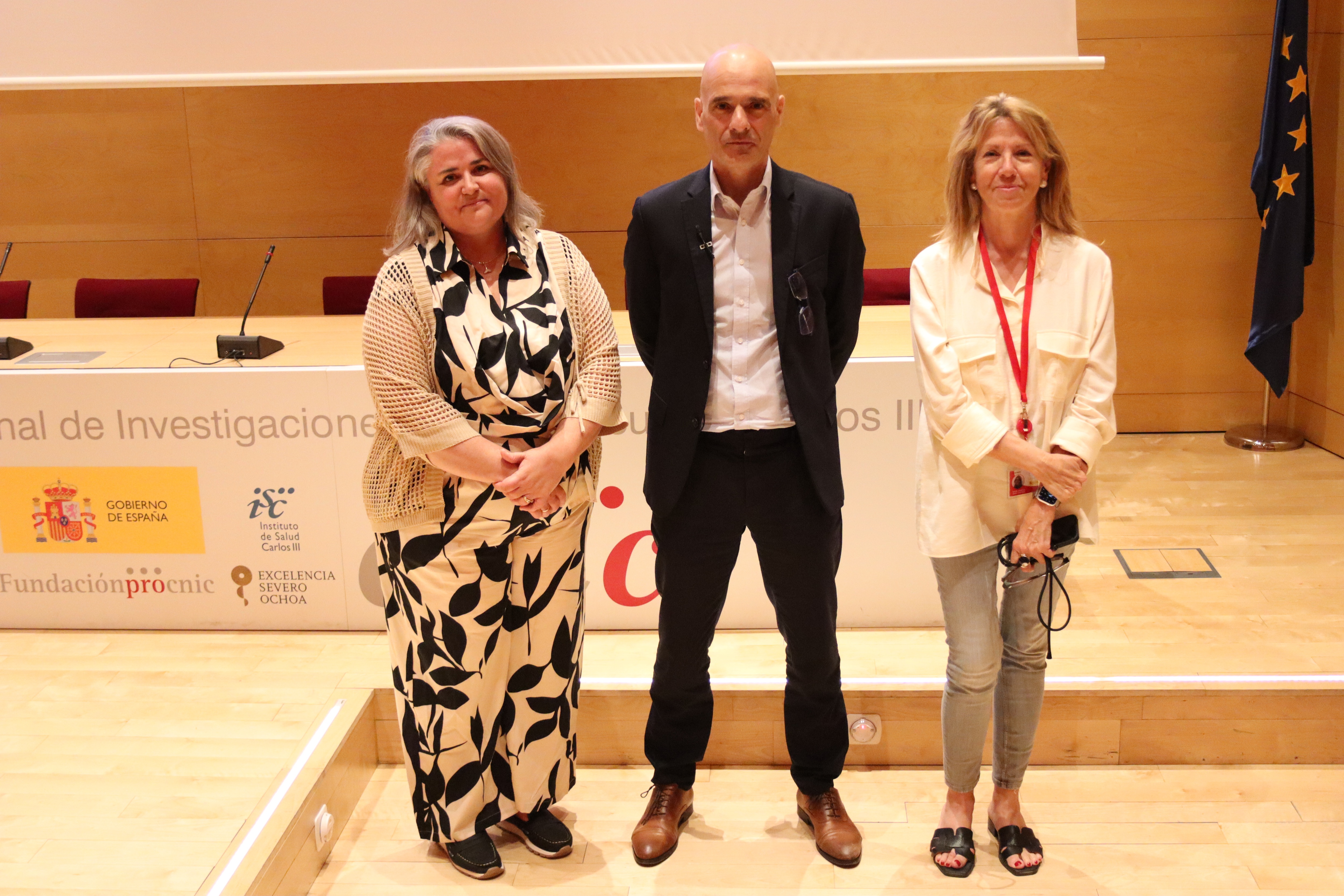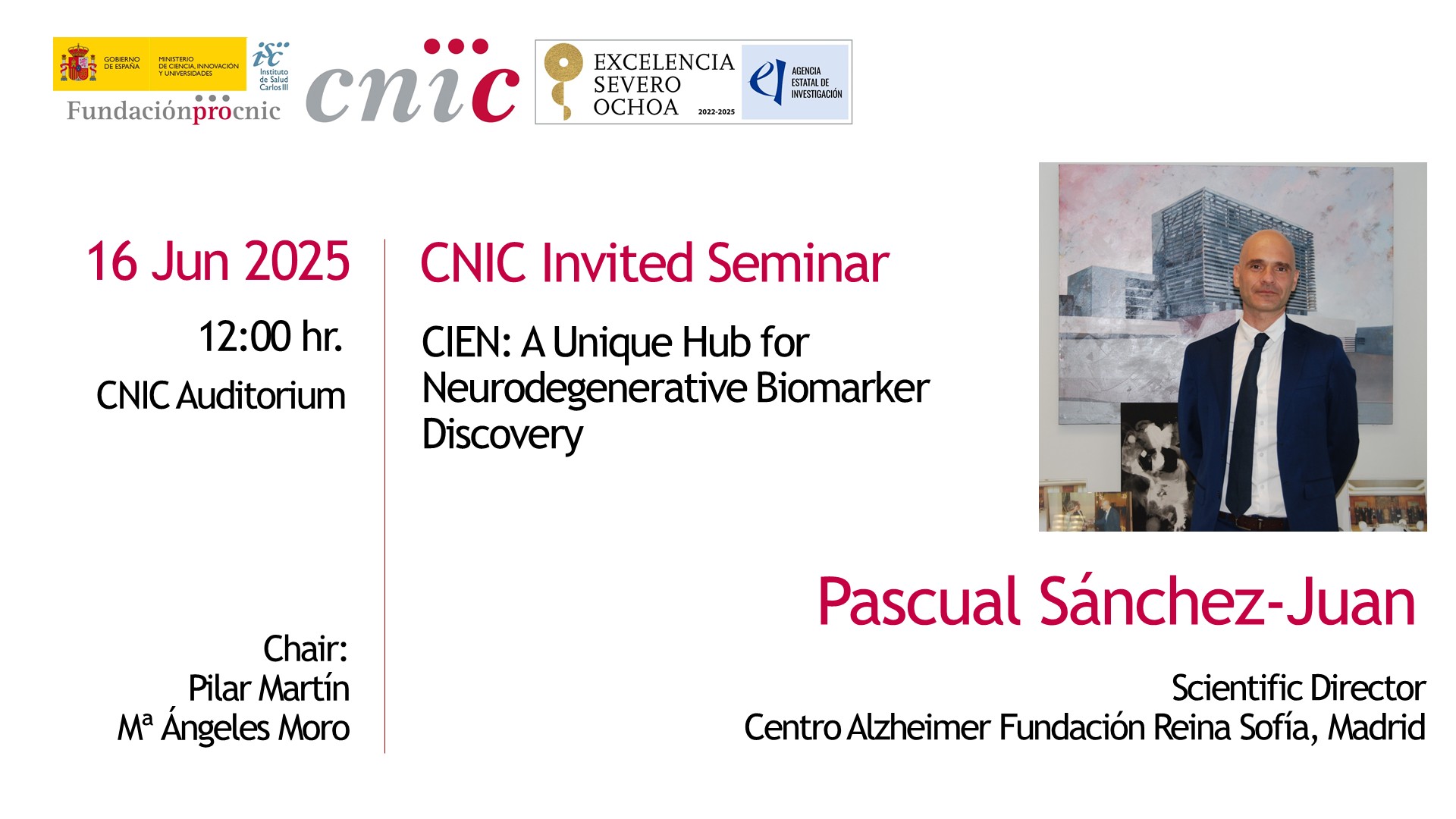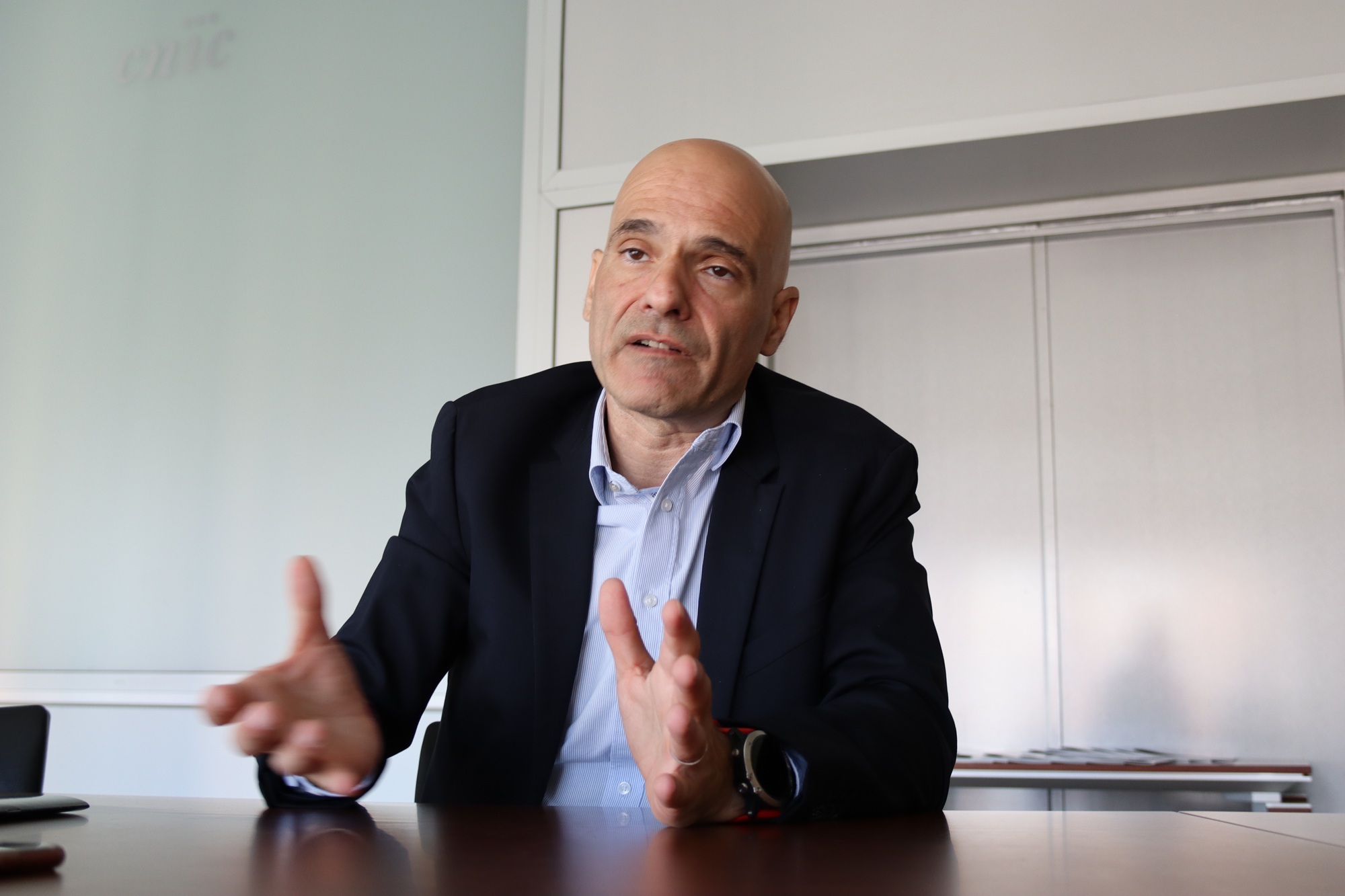Pascual Sánchez-Juan: “As a clinician, it frustrates me that we don’t see clear benefits for the patient”
Dr Pascual Sánchez-Juan is Scientific Director of the CIEN Foundation (Centre for Research on Neurological Diseases) dependent on the Carlos III Health Institute (ISCIII) Dr Sánchez-Juan is an expert in dementia research and has headed the Cognitive Deterioration Unit of Santander’s Marqués de Valdecilla University Hospital, the institution where he is also scientific director of the Valdecilla Biobank.
- What are the CIEN foundation’s lines of research?
At the CIEN Foundation we’re researching biomarkers in neurodegenerative diseases, a field that is currently abuzz with activity, particularly regarding markers in blood. Until now, good markers for Alzheimer's came from analysing cerebrospinal fluid or PET scans, which are both costly and invasive. The latest major development is that we can use a blood test to detect the disease with similar levels of sensitivity and specificity to those of traditional methods, which is a complete game changer for diagnostic scalability.
- Does that mean more accessible early diagnosis?
Exactly. What’s more, for the first time in over two decades, treatments that modify disease progression rather than just relieving symptoms are on the horizon. For more than two decades there was no new treatment for Alzheimer's disease. What we had were symptomatic drugs, which relieved the effects but did not modify the course of the disease. Now, for the first time, treatments are starting to arrive that promise to act on the biology of Alzheimer's. Specifically, on one of the proteins that accumulate in the brain: amyloid protein. These new drugs can reduce their accumulation, which in turn delays the progression of symptoms. However, in order to administer these treatments effectively, a precise diagnosis is essential. That’s why we need reliable biomarkers and the possibility of studying a broader population. In addition, all indications are that the sooner treatment begins, the better the prognosis. So we are at a key moment in our discipline: new, modifying treatments are starting to arrive at the same time as we have increasingly effective diagnostic tools. Even so, there are still many unknowns. There are gaps in knowledge that we need to overcome if we want to optimise the use of these treatments, not only current ones but also those in development which act on other targets that may be more efficient. What we are seeing now is only the tip of the iceberg.
- What is the focus of current research?
One of our main lines is identifying individuals at a pre-clinical stage; that means they have the condition but aren’t showing any symptoms yet. With studies like the Vallecas cohort, which began in 2011, we’ve been following cognitively healthy people over the age of 70 for years. Even back then we observed that some people presented the condition in blood, and now we are following their 5 and 10-year progressions in terms of cognitive symptoms, cerebral atrophy, and other markers. That gives us very valuable information.
- What new technologies are being applied?
We are using artificial intelligence, genetics, and digital markers such as spontaneous language analysis to detect risk even before the onset of symptoms. For instance, we train algorithms with people who we know to have markers, and that way we can fine tune predictive capacity. We want to reach determinism: to be able to say who will, in all likelihood, develop the disease and to be able to treat it in time.
- What is the role of markers in blood in risk stratification?
We use a blood marker called phosphorylated tau 217, which is a type of circulating tau protein. It comes from the brain and is very specific to that organ, although it can be detected in blood. Phosphorylated tau 217 levels have an almost linear association with neurodegeneration, which is why it’s considered a very useful marker.
We have data from the Vallecas Project, where we observe that this marker has a very good association with cognitive deterioration. That is to say, we see progressive atrophy in the brains of people who have higher levels of phosphorylated tau 217 in particular in the hippocampus, which is the area associated with memory. We also observe how other markers of neurodegeneration or inflammation, measured sequentially, increase over time.
- Are you also studying inflammatory biomarkers?
We are specifically interested in a marker that comes from astrocytes, the cells that support the brain. This marker appears expressed in astrocytes when they are activated or “angry” so to speak, for instance, in response to some type of brain damage.
When this happens, astrocytes activate, get bigger and begin to express a protein called GFAP (glial fibrillary acidic protein). At that moment, the function changes: it can absorb cells or act more aggressively towards the damage it has detected.
The interesting thing is that in Alzheimer’s disease this protein -expressed by the reactive astrocyte cell- appears at high levels in plasma although, curiously, the change is not so evident in cerebrospinal fluid. This finding has led us to interpret GFAP in plasma as a possible marker of astrocyte reactivity, which is associated with a worse prognosis.
We have observed that people with high levels of this marker tend to have greater cognitive decline and more cerebral atrophy over time. Indeed, GFAP has been included in new proposals for Alzheimer's disease diagnostic criteria, although it is not yet clear what role it plays or how we should use it in clinical practice. In our case, what we have done with this marker is analyse it in a project called VARS (Vallecas Alzheimer Center Reina Sofia). This has enabled us to show for the first time in humans, based on postmortem measurements taken from patients brains, that high levels of GFAP in blood are related with astrocyte activation.

- What is the value of having a brain bank like the one in your centre?
Immense. It means we can compare clinical samples taken in life with the postmortem neuropathology within an unbeatable time period (around 140 days). This offers us a unique window to validate biomarkers and better understand the mechanisms of the disease.
- Another of your research areas is co-pathologies in Alzheimer's disease.
We are also studying how co-pathologies affect different biomarkers, how we can detect some of these pathologies using new biomarkers and how we can detect some of these diseases using new biomarkers. For instance, we are attempting to detect the protein TDP-43. When it is analysed in blood, it is not a good marker. But we are looking for it in extracellular vesicles, which seems to be a more promising approach
This isn’t a new strategy; it has already been used in other contexts. What is interesting is that we have seen how, in diseases like ALS or frontotemporal dementia, the TDP-43 encapsulated in vesicles is more sensitive as a marker than its free form in plasma.
We are applying the same approach for Alzheimer's patients, and we have already seen some quite promising preliminary results.
In short, our approach is to study biomarkers in the context of the co-pathologies presenting in the brains of our patients to better understand the complexity of the disease and move towards a more precise and personalised characterisation.
- So should we stop talking about “Alzheimer's disease” as a single entity?
Completely. We should think of it more as Alzheimer’s syndrome, where multiple vectors come together: amyloid, tau, vascular, synuclein, TDP-43, and so on. Today we don’t have accessible biomarkers for many of these proteins, but when we do have them, we will be able to be much more precise in both diagnosis and treatment.
- There are over 138 potential drugs for Alzheimer's in 182 clinical trials.
Alzheimer's is also a complex, multifactorial disease. Let’s say there are two routes. One is to act as early as possible, during the initial stages, on the first thing that appears, which is amyloid protein. We already have drugs for that, which show good clinical results, at least in part. But it is clear that when symptoms already exist, we are probably going to need other targets, like inflammation or the tau protein, which are also involved in Alzheimer's. And, in addition, we have to consider co-pathologies: many patients present more than one neurological disorder, and that might require specific treatments, which are also in development, when they become available.
This is much more complex than the idea of a “magic bullet” to cure Alzheimer's. Like what happened with cancer, we are faced with an enormous biomedical challenge. And the brain is much more complex than any other peripheral organ.
Even so, I am optimistic. Major steps have been made. Genetics is helping give us a better understanding of the causes. Every day we are making more precise diagnoses earlier, and the first treatments are arriving.
As a clinician, it frustrates me that we don’t see clear benefits for the patient, but it’s only a matter of time. The first antiamyloid drugs have already been approved by the European Medical Agency and will soon be available.
- It’s a social demand…
Exactly, there is a social need: this is like when the first stroke units were created. In the early days, treatments were limited and not risk-free, so it was done in a controlled way. But just having the patient in a specialist unit improved prognosis because everything was done better. And then came more effective treatments, like embolectomy.












